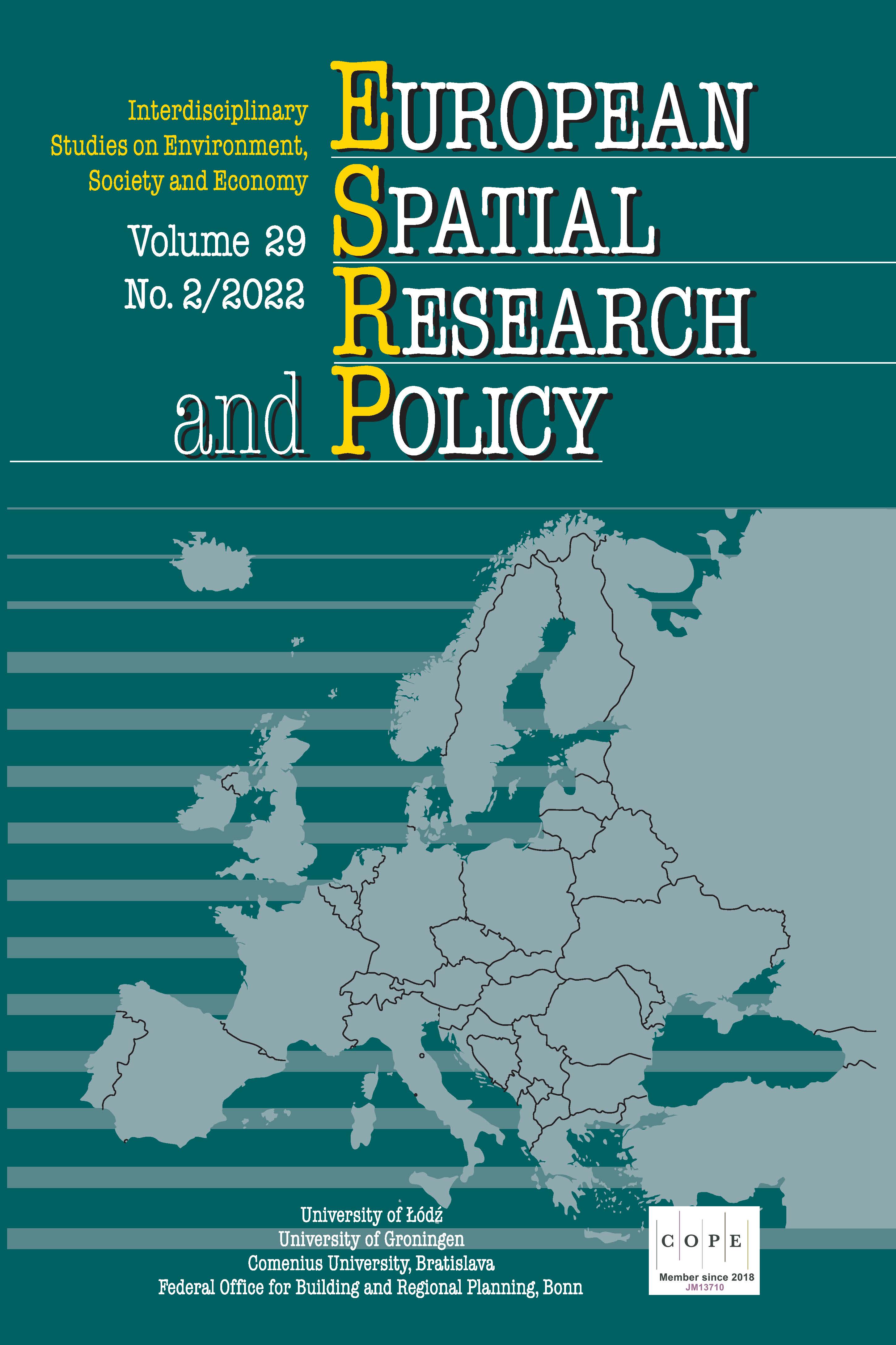The spatial, temporal and structural approach to interregional tourism inflows’ sustainability – on the example of four Erasmus+ SPOT project case study regions
DOI:
https://doi.org/10.18778/1231-1952.29.2.10Keywords:
tourist flows, spatial concentration of tourists, weighted intensity of tourism, Piemonte, Innlandet, Łódzkie, CentroAbstract
Based on produced regional data on tourism arrivals across 297 NUTS2 regions of the EU and EFTA countries covering the temporal scope of 2010–2018, the spatial concentration of tourist inflow in Europe, average annual dynamics of tourist inflow between 2010–2018, and a relative position of the tourist branch of the economy in a given region has been determined. An attempt was made to present a typology of regions according to the weighted intensity and spatial concentration of tourist inflow. Special attention has been given to SPOT project case study regions: Piemonte in Italy, Innlandet in Norway, Łódzkie in Poland, and Centro in Portugal.
Downloads
References
CASTELLS, M. (2004), ‘An Introduction to the Information Age’, [in:] WEBSTER, F., BLOM, R., KARVONEN, E., MELIN, H., NORDENSTRENG, K. and PUOSKARI, E. (eds.), The Information Society Reader, London and New York: Routledge, pp. 138–149.
Google Scholar
CHRISTALLER, W. (1963), ‘Some considerations of tourism location in Europe: the peripheral regions under developed countries-recreation areas’, Regional Science Association Papers, 12, pp. 95–105.
Google Scholar
ESPON IRiE (2021), Interregional flows of tourism in Europe, Final Report, Annex 6, https://www.espon.eu/programme/projects/espon-2020/applied-research/interregional-relations-europe [accessed on: 16.05.2022].
Google Scholar
ESPON IRiE (2022), Pan-european systemic analysis, Scientific Report, https://www.espon.eu/programme/projects/espon-2020/applied-research/interregional-relations-europe [accessed on: 16.05.2022].
Google Scholar
EUROSTAT (2021), Database, https://ec.europa.eu/eurostat/web/main/data/database [accessed on: 12.02.2021].
Google Scholar
FENNELL, D. A. and COOPER, C. (2020), Sustainable Tourism: Principles, Contexts and Practices, Bristol, Blue Ridge Summit: Channel View Publications, https://doi.org/10.21832/9781845417673
Google Scholar
GARIN-MUNOZ, T. and PEREZ AMARAL, T. (2000), ‘An econometric model for international tourism flows to Spain’, Applied Economics Letters, 7 (8), pp. 525–529.
Google Scholar
KÁDÁR, B. and GEDE, M. (2021), ‘Tourism flows in large-scale destination systems’, Annals of Tourism Research, 87, 103113, pp. 1-16.
Google Scholar
LOZANO, S. and GUTIÉRREZ, E. (2018), ‘A complex network analysis of global tourism flows’, International Journal of Tourism Research, 20 (5), pp. 588–604.
Google Scholar
MAZUR, M. and CZAPIEWSKI K. (2016), ‘Functional structure of gminas in Poland – classification approaches and research opportunities’, [in:] WÓJCIK, M. and CZAPIEWSKI, K. (eds.), Multifunctional development in rural spaces: challenges for policy and planning, Studia Obszarów Wiejskich, 43, pp. 7–22.
Google Scholar
PRIDEAUX, B. (2005), ‘Factors affecting bilateral tourism flows’, Annals of Tourism Research, 32 (3), pp. 780–801.
Google Scholar
SHAO, Y., HUANG, S., WANG, Y., LI, Z. and LUO, M. (2020), ‘Evolution of international tourist flows from 1995 to 2018: A network analysis perspective’, Tourism Management Perspectives, 36, 100752, pp. 1-14.
Google Scholar
SONG, H. and WITT, S. (2006), ‘Forecasting international tourist flows to Macau’, Tourism Management, 27 (2), pp. 214–224.
Google Scholar
SPOT (2022), SPOT. Sustainable Spatial Planning of Tourism Destinations, https://spot-erasmus.eu/ [accessed on: 17.05.2022].
Google Scholar
UNWTO (2021), UNWTO Tourism Data Dashboard, https://www.unwto.org/unwto-tourism-dashboard [accessed on: 12.02.2021].
Google Scholar
UNWTO (2022), Sustainable Development, https://www.unwto.org/sustainable-development [accessed on: 16.05.2022].
Google Scholar
VIEGAS, J., SILVA, E. A. and MARTINEZ L. (2009), ‘Effects of the Modifiable Areal Unit Problem on the Delineation of Traffic Analysis Zones’, Environment and Planning B – Planning and Design, 36 (4), pp. 625–643.
Google Scholar
WILLIAMS, S. and LEW, A. A. (2015), Tourism Geography. Critical Understandings of Place, Space and Experience, 3rd Edition, London and New York: Routledge.
Google Scholar
ZHANG, J. and JENSEN, C. (2007), ‘Comparative advantage: Explaining Tourism Flows’, Annals of Tourism Research, 34 (1), pp. 223–243.
Google Scholar
Published
Versions
- 2024-01-09 (2)
- 2022-11-17 (1)
How to Cite
Issue
Section
License

This work is licensed under a Creative Commons Attribution-NonCommercial-NoDerivatives 4.0 International License.
Funding data
-
Erasmus+
Grant numbers 2019-1-PL01-KA203-064946














